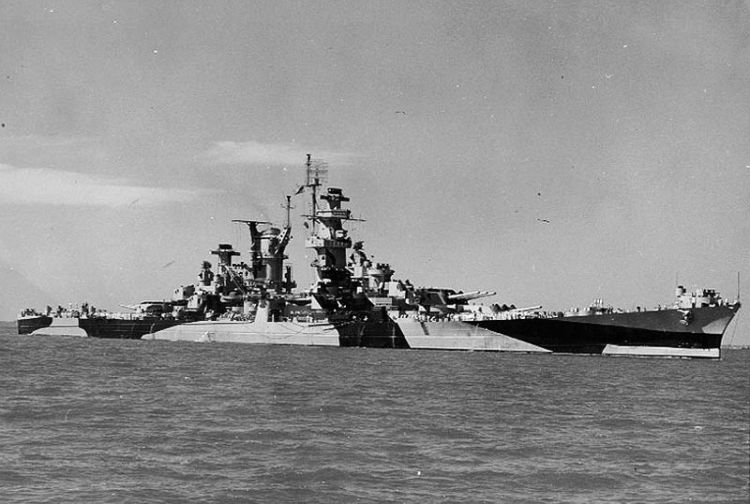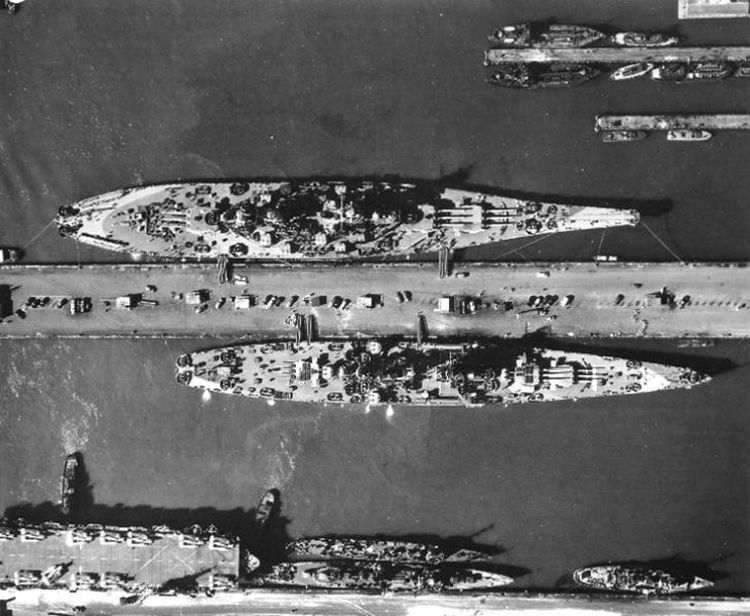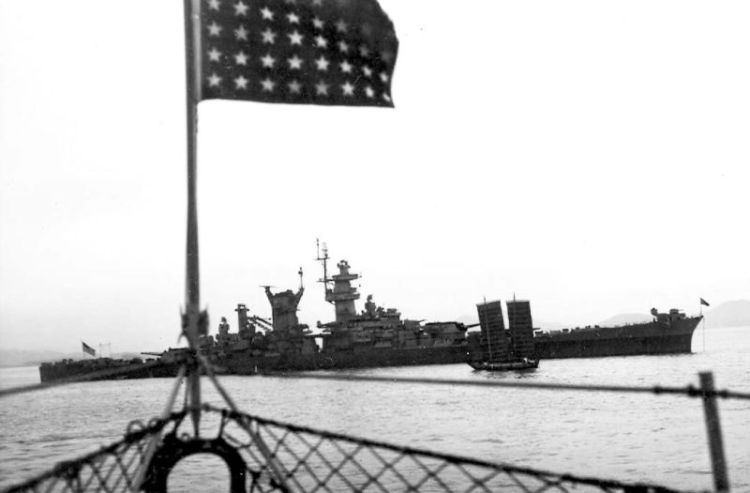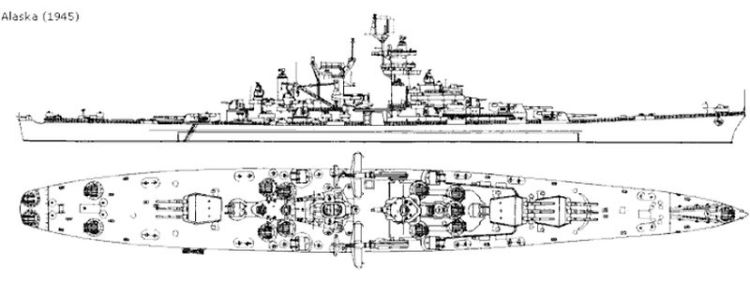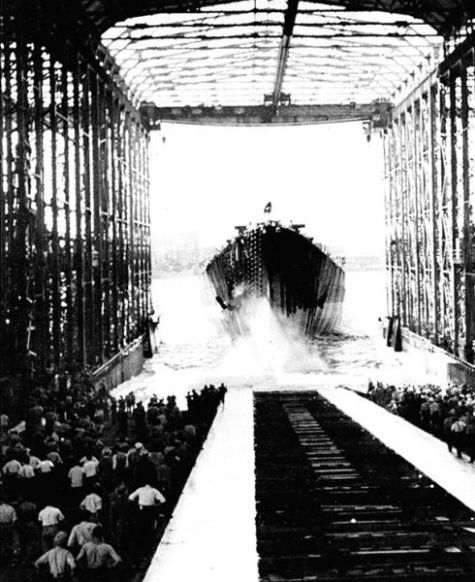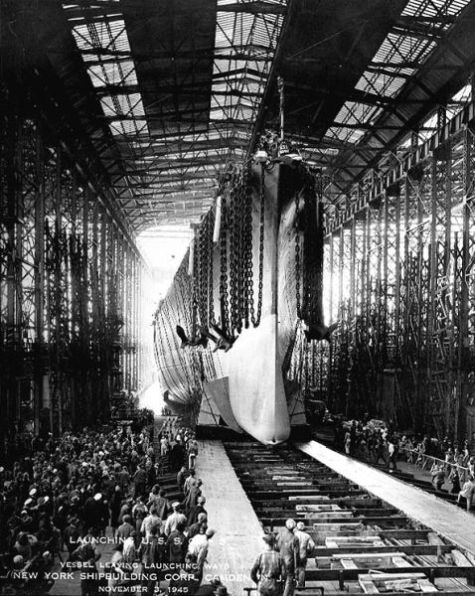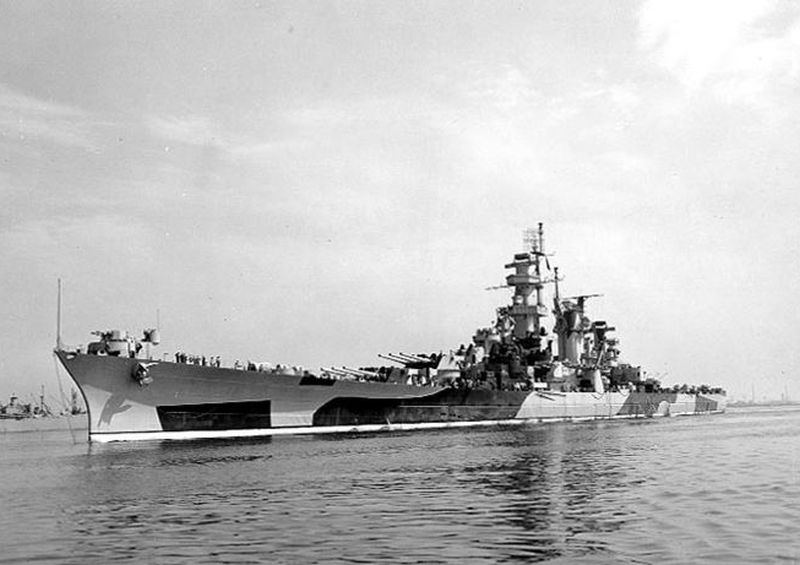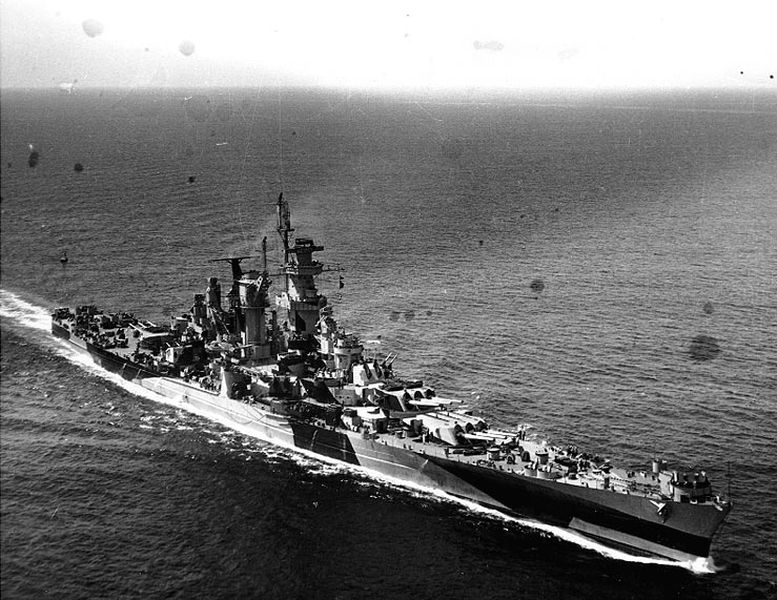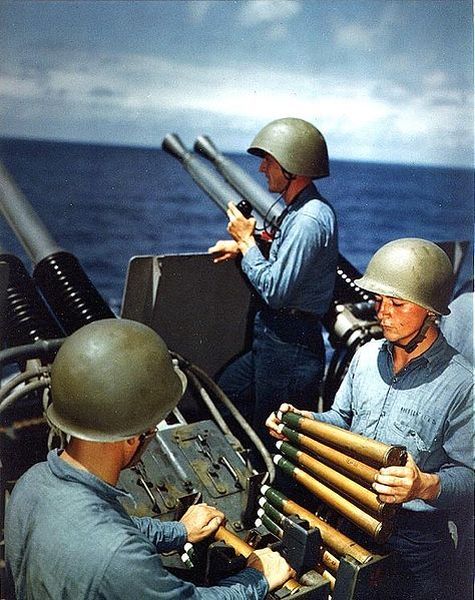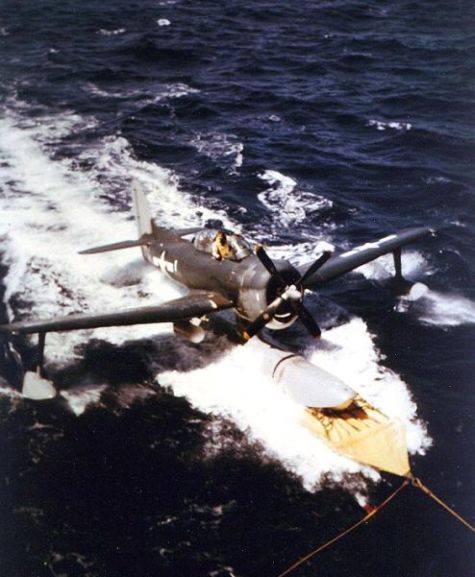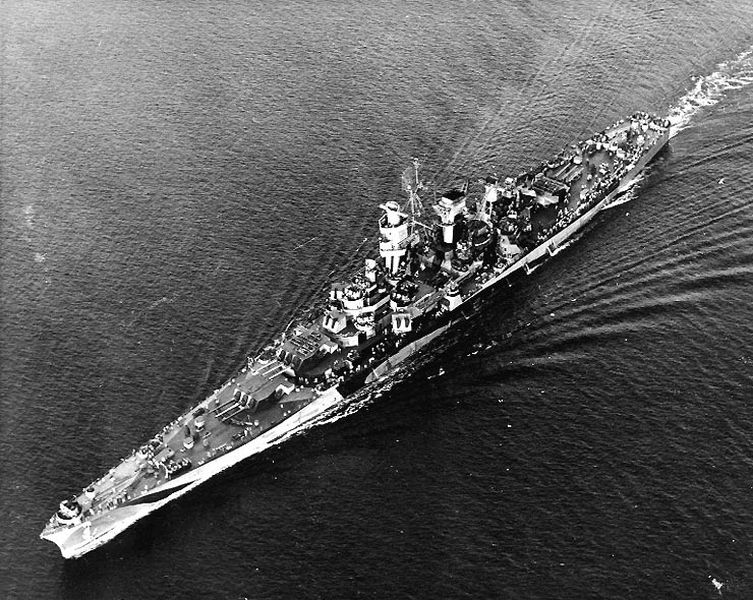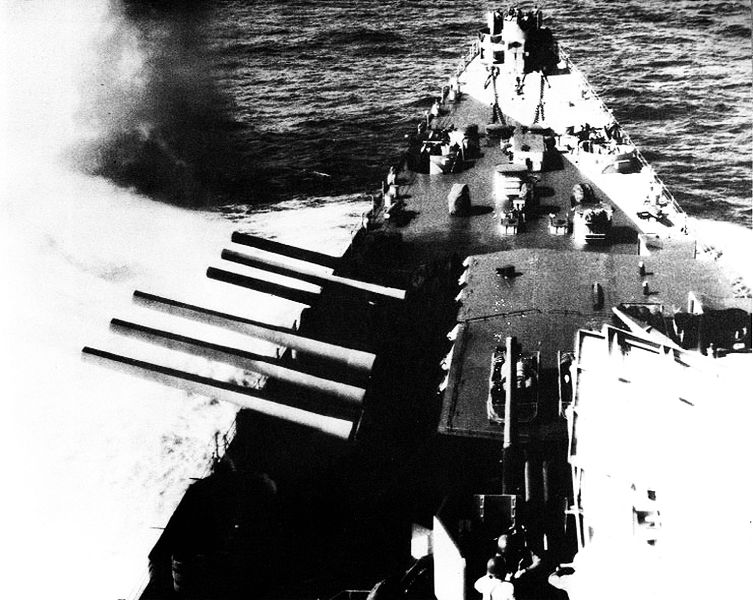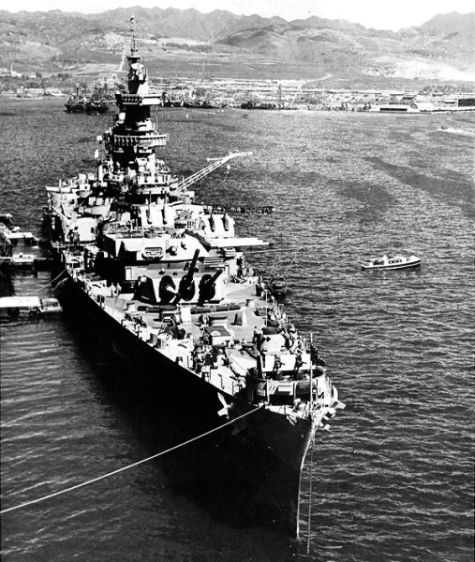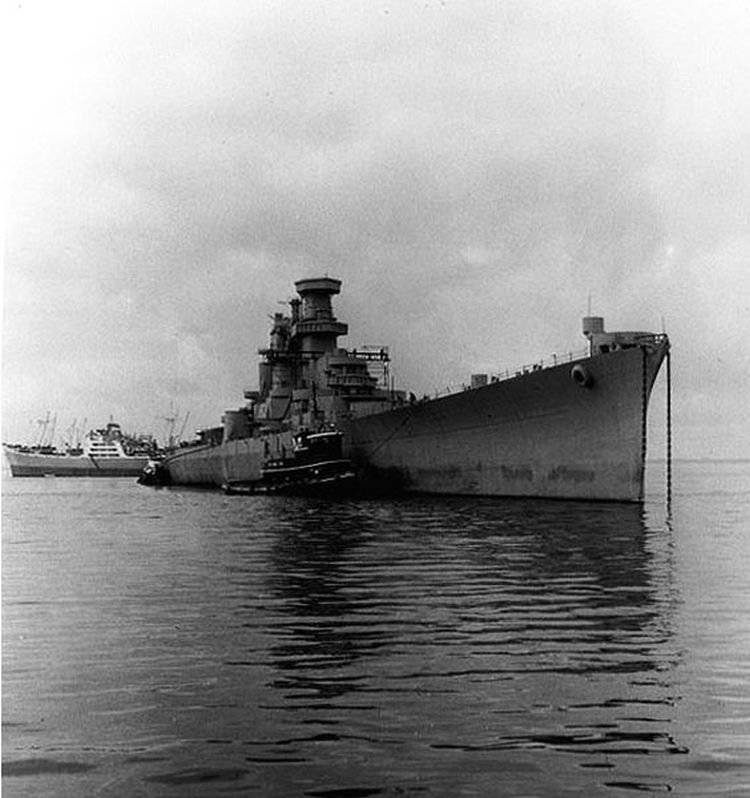Introduction
The idea of the US Navy to build battlecruisers came up in the early 30s in response to the German Schwere Kreuzer (heavy cruisers) of the Deutschland class. A British journalist called the Deutschland, renamed Lützow in 1940, the Admiral Graf Spee and the Admiral Scheer pocket battleships but the Kriegsmarine talked about Panzerschiffe, armored vessels and classified them later on as heavy cruisers. With a standard displacement of 12,000 BRT, a maximum speed of 28 knots and a primary armament of six 28cm guns, the vessels of the Deutschland class were just that. The US Bureau of Construction and Repair didn't take steps yet in that direction.
Towards the end of the 30s, the American intelligence service assumed the Japanese were planning to build super cruisers which would overclass American cruisers in all respects. The idea to build cruisers that could defeat these Japanese super vessels was rekindled and seriously discussed in the highest navy circles, the General Board. The conclusion was reached, a class of super cruisers was needed which could be deployed as cruiser killers. In order to be up to this task, the new war ships should be equipped with a heavier primary armament than cruisers and a higher maximum speed than capital battleships.

The design of the Alaska class battlecruisers was based on the design of the Baltimore class heavy cruisers. Source: http://Wikipedia
As battlecruisers for the American navy had never been completed, (the Lexington class battlecruisers had been converted to aircraft carriers in the 20s while still under construction), it took a long time before said Bureau came up with a definite design. No less than nine predesigns ended in the dustbin. These early designs varied from further development of the light Atlanta class cruisers of 6,000 BRT to a preliminary design of a battleship of 38,000 BRT with a relatively light primary armament. At the end of the day, the definite design was based on an enhanced version of the heavy Baltimore class cruisers with the same power plant as the new Essex class carriers.
Strange as it may be, the US Navy classified the new vessels as heavy cruisers and the bow signs would begin with CB (Cruiser Big). However, with a standard displacement of 27,000 BRT, a main armament of nine 30.5cm guns, limited armor, little protection below the waterline and a maximum speed of 33 knots, the vessels would perfectly match the characteristic requirements of the battlecruiser. The primary armament may have been somewhat lighter than on most of the battleships at that moment, but just as heavy as the Wyoming class vessels. Moreover, the modern versions of the 30.5cm 50 caliber Mk 8 guns performed better than the older 35.5cm Mk 2 and 4 guns installed on the New York, Nevada, Pennsylvania, Tennessee and the New Mexico class vessels. With this main armament, the new class would outclass all cruisers in the world and with a speed of 33 knots, they would outrun all battlecruisers in the world as well.
In order to confirm that the new vessels would be classified between the heavy cruiser and the capital ship they would be named after American territorial areas. Battlecruisers were named after American states and heavy cruisers after major American cities. The names of the vessels in this new class, Alaska, Guam, Hawaii, Philippines, Puerto Rico and Samoa fitted nicely between these series.
In 1940, the order to construct six battlecruisers of the Alaska class was given to the New York Shipbuilding Corp. of Camden, New Jersey. On December 17, 1941, the keel of the Alaska was laid and that of the Guam on February 2, 1942. In early 1943, construction of the battlecruisers had been given a very low priority because the material, ordered for the production of these vessels was allocated to the production of the more important various classes of carriers and submarines. On June 23, 1943, the order to build the Philippines, Puerto Rico and Samoa was cancelled. On December 20 of that year, the keel of the Hawaii was laid nonetheless but this battlecruiser would never see completion.
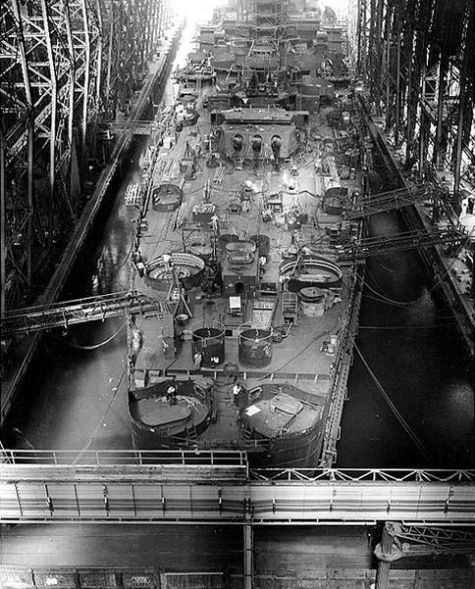
USS Hawaii under construction at the NY Shipbuilding Corp., Camden, New Jersey, July 3, 1946. Source: http://History Navy
USS Alaska and Guam were commissioned in the first half of 1944 but by then, the majority of all Japanese cruisers had been destroyed by aircraft or submarines. In the last years of the war therefore, both vessels served as escorts of fast carriers and carried out coastal bombardments. Because the vessels were only lightly armored and were hardly protected below the waterline, they were extremely vulnerable and so remained in service for just a few years. In 1947 USS Alaska and Guam were added to the mothball fleet and sold for scrap in 1961.
Definitielijst
- battleship
- Heavily armoured warship with very heavy artillery.
- caliber
- The inner diameter of the barrel of a gun, measured at the muzzle. The length of the barrel is often indicated by the number of calibers. This means the barrel of the 15/24 cannon is 24 by 15 cm long.
- Kriegsmarine
- Germa navy. Part of the Wehrmacht next to Heer and Luftwaffe.
Vessels in this class
| Name | Bow sign | Keel laid | Launched | in servce | USS Alaska | CB-1 | Dec 12, 1941 | Aug 15, 1943 | June 17, 1944 |
| USS Guam | CB-2 | Feb 2, 1942 | Nov 12, 1943 | Sep 7, 1944 |
| Hawaii | CB-3 | Dec 20, 1943 | Mar 11, 1945 |
Technical data USS Alaska
| Length over all: | 792 feet |
| Beam: | 91 feet |
| Draught: | 32 feet |
| Standard displacement: | 27,000 BRT |
| Maximum displacement: | 34.253 BRT |
| Power plant: | 4 x General Electric geared highpressure steam turbines |
| Boilers: | 8 x Babcock & Wilcox 3-drum Express Type ketels |
| Power output: | 150.000 hp |
| Propellors: | 4 4-bladed |
| Fuel capacity: | 3,618 ton fuel oil |
| Maximum speed: | 33 knots |
| Range: | 12,000 nautical miles at 15 knots |
| Crew: | 1,517 men |
| Crew in 1945: | between 1,799 and 2,251 men |
| Primary armament: | 3 30.5cm 50-kaliber Mk 8 guns |
| Secundary armament: | 6 twin 12,5cm 38-caliber Mk 12 multipurpose guns |
| Anti-aircraft: | 56 40mm Bofors (14 x 4) and 34 20mm Oerlikon machineguns |
| Armor: | 5 to 9 inch belt armor, 11 to 13 inch turret, 2 to 11 commando turret and 5.8 to 6 inch deck armor |
| Aircraft: | 3 Vought OS2U Kingfisher or 3 Curtiss SC Seahawk float planes |
| Radar: | SG-1 surface search-, SK air-search-, Mk 38 and Mk 8 main battery, Mk 37 and Mk 12 secondary battery and Mk 57, 29, 34 and 39 MG battery (40mm) radar |
The Alaska class vessels showed relatively poor characteristics as to maneuverability. This was mainly caused by the application of a single rudder. Normally speaking, four-propellor vessels have a dual rudder, accelerating the steering of the vessel. With a single rudder, the vessel responds much more slowly. Therefore the Alaska class battlecruisers had a turning circle with a radius of 900 yards, far larger than the Iowa class vessels which were over 98 feet longer.
Definitielijst
- battery
- Unit of the artillery operating a number of guns. In size comparable to a company. In various countries the staff unit with the artillery is also called a battery. Batteries can be independent units and can be assigned to other units, for example toa regiment or a division, or be part of a larger artillery formation which is usually a battalion. In the Netherlands an artillery battalion is designated as “afdeling”.
- caliber
- The inner diameter of the barrel of a gun, measured at the muzzle. The length of the barrel is often indicated by the number of calibers. This means the barrel of the 15/24 cannon is 24 by 15 cm long.
- Radar
- English abbreviation meaning: Radio Detection And Ranging. System to detect the presence, distance, speed and direction of an object, such as ships and airplanes, using electromagnetic waves.
The battlecruisers in detail
USS Alaska (CB-1)
After this vessel was commissioned on June 17, 1943, she made trial runs in Chesapeake Bay and later on in the Caribbean Sea near Trinidad. After testing, she sailed to the Philadelphia Naval Shipyard for final adaptations and the fitting of four Mk 57 range finders for the fire control of the twelve 12.5cm guns. On November 12, she set sail for Guantanamo Bay on Cuba for intensive trials lasting two weeks. On December, she set course for the Pacific and passed through the Panama Canal two days later. After 10 days she berthed in San Diego. From this Californian port, the gunners trained for weeks for coastal bombardments and with the AA battery.
On January 13, 1945, USS Alaska arrived in Pearl Harbor and was assigned to Task Force 12,2 (Taffy 12,2) which set sail for the new American naval base on Ulithi, the most northwestern island of the Carolinas. There, Taffy 12,2 was incorporated into TF 58. This unit was formed around four fast Essex class carriers. Taffy 58 carried out air raids on Tokyo and surrounding area in order to inflict as much damage as possible to the Japanese war industry. Early March 1945, she was assigned to Taffy 58,5 which provided air support during the attack on Iwo Jima. Throughout, she lent air support to carriers without being attacked herself. The following months, the new battlecruiser was involved in the battle of Okinawa. During this campaign, her AA crew downed the first enemy aircraft and, along with her sister ship USS Guam, she participated in coastal bombardments of the Japanese island. In the summer of 1945, again together with the USS Guam she was allocated to Cruiser Task Force 95. This unit was ordered to chase as many small Japanese vessels as possible from the South Chinese Sea. As towards that time, nearly all Japanese had disappeared from these waters, the hunt had little success.
On August 30, 1945, USS Alaska left Okinawa to become part of the US 7th Fleet, the occupation force of what would later become South Korea. In November that year, she took part in Operation Magic Capet by taking US military personnel from South Korea to San Francisco. On December 13, 1945 she left California by way of the Panama Canal to the Boston Naval Shipyard. Here, the battlecruiser was prepared to be taken up into the reserve fleet. In a state of conversion, the vessel was towed to Bayonne, New Jersey and was incorporated into the Atlantic Reserve Fleet. USS Alaska was officially decommissioned as late as February 17, 1974.
The battlecruiser was awarded three Battle Stars for services rendered during World War Two.
In 1958, the Bureau of Ships of the American navy conducted research into the possibilities to convert Alaska and her sister ship Guam into guided missile cruisers. After all guns had been removed, the vessels would be equipped with Talos, Tartar and Regulus II rocket systems, sonar and anti-submarine helicopters. Just as with the Iowa class vessels, conversion would become too expensive, hence they were never carried out. Instead, on June 30, 1961, Alaska was sold for scrap to the Lipsett Division of Luria Brothers in New York City.
The Alaska had been in service for only 32 months of which 18 on active duty.
USS Guam (CB-2)
USS Guam made her trial runs in the Caribbean Sea near Trinidad. After a few weeks of training, the new battlecruiser left Philadelphia on January 17, 1945 and reached Pearl Harbor by way of the Panama Canal. Just like the Alaska, the Guam was assigned to TF 58 and participated in the invasion of Iwo Jima and Okinawa. From May she was assigned to TF 38,4 and lent air support to a few carriers that launched air raids on Kyushu. In July, she became the flagship of Cruiser Task Force 95, the unit that saw little success in in hunting down and destroying Japanese vessels in Chinese waters.
August 7, 1945 USS Guam returned to Okinawa to become the flagship of the North China Force. This unit was tasked with flag display in the South-China region. From September 6, she was present near Korea to provide assistance to the occupational force in that part of the Korean peninsula liberated by the Americans. Just like her sister ship, USS Alaska, she took part in Operation Magic Carpet repatriating American military to their homeland. On December 3, 1945, the soldiers disembarked safely from the battlecruiser and two days later, the vessel was on her way to the American east coast. She arrived in Bayonne, New Jersey and was conserved on the spot. She was decommissioned on January 17, 1947 and incorporated into the New York Group of the Atlantic Reserve Fleet. On May 24, 1961, she was sold for scrap to the Boston Metals Company of Baltimore, Maryland. She had been in service for just 29 months of which only 17 on active duty.
The battlecruiser was awarded two Battle Stars for service during World War Two.
USS Hawaii
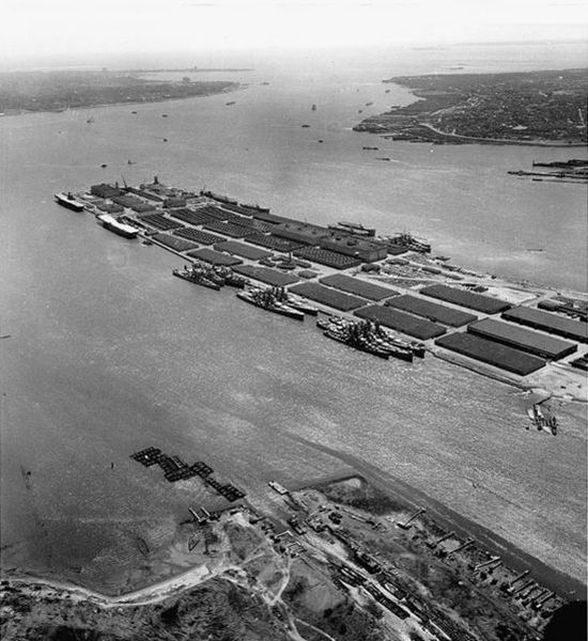
The mothball fleet in Bayonne, New Jersey, April 15, 1953; to the far right USS Alaska and Guam. Source: http://History Navy
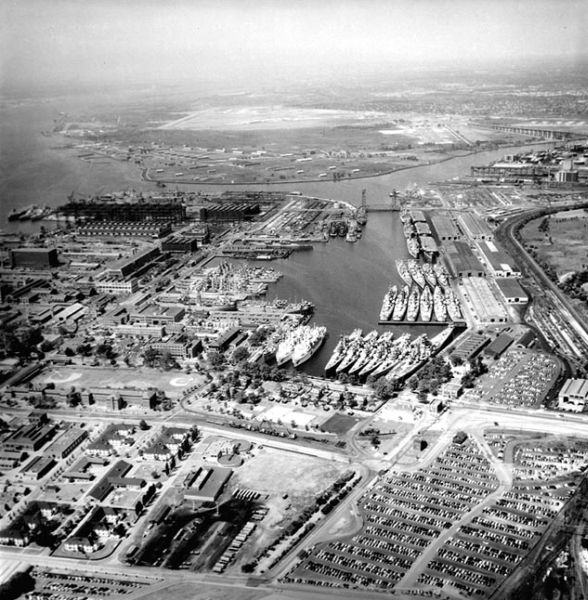
The mothball fleet in Philadelphia, May 19, 1955, the closest vessel is USS Hawaii. Source: http://Navsource
The keel of the third vessel of the Alaska class, the Hawaii, was laid on December 20, 1943 and she was launched March 11, 1945. Construction of this battlecruiser was never completed though. Steel plates, in total 4,241 metric tons destined for her, were used from July 1942 onwards for the construction of the Essex class carriers. In September 1946, the US Navy thought about using the battlecruiser, 85% completed, as test bed for guided missiles. This plan wasn't approved however as the designers of the guided missile systems had lagged far behind in design. April 16, 1947, construction of the vessel was aborted and she was incorporated into the mothball fleet. In this stage of construction, her primary armament and superstructure had almost been completed. On April 15, 1959 the Hawaii was sold for scrap to the Boston Metals Company. January 6, 1960, the vessel arrived at the demolition yard in Baltimore to be dismantled in the course of that year.
Definitielijst
- invasion
- Armed incursion.
- rocket
- A projectile propelled by a rearward facing series of explosions.
Epilogue
As the battlecruisers of the Alaska class were so vulnerable, especially below the water line, they were the least useful capital ships of the US Navy during World War Two. As the navy was aware of this as well, construction of the vessels was given a low priority. This meant that the first two vessels of this class were commissioned only after their most important opponents, the Japanese super cruisers, had been destroyed. This made the Alaska class vessels redundant as well. If they had been delivered according to the original plans they would in all probability have been sunk by enemy torpedoes even before the end of the war. So, the class was already doomed to failure on the drawing board. It may therefore be considered odd that construction of the Alaska and Guam was entirely completed and construction of the Hawaii was aborted as late as 1947.
Information
- Article by:
- Peter Kimenai
- Translated by:
- Arnold Palthe
- Published on:
- 06-08-2023
- Feedback?
- Send it!
Sources
- DULIN, R.O. JR. & GARZKE, W.H.JR., Battleships, Naval Institute Press, Annapolis, Maryland, 1976.
- HORE, P, Slagschepen, Veltman Uitgevers, Utrecht, 2006.
- LYON, H, Encyclopedie van de belangrijkste oorlogsschepen ter wereld, Scriptoria, Antwerpen, 1980.
- MCCURTIE, F.E., Jane`s Fighting Ships of World War II, Military Press, New York, 1989.
- TERZIBASCHITSCH S., Battleships of the US Navy in World War II, Bonanza Books, New York, 1977.
